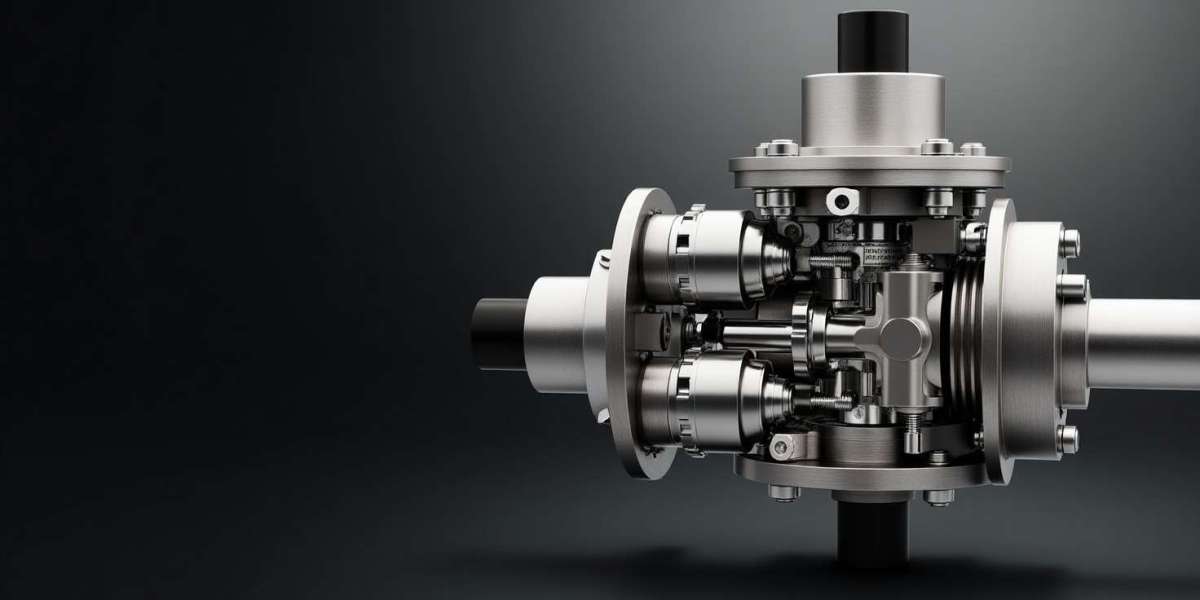If you’ve ever been on a job site where a machine suddenly comes to a halt, you know the frustration and costs that downtime can bring. Mobile hydraulic equipment—excavators, loaders, cranes, harvesters, and countless other machines—form the backbone of industries ranging from construction and mining to agriculture and transport. But when hydraulic systems fail, everything stops. That’s where mobile hydraulic repair comes in—not just as a necessity but as a lifeline for operations that can’t afford long delays.
You’re here because you know how important hydraulic systems are, and you’re probably looking for more than just quick fixes. You want to understand what goes wrong, how to prevent it, and which solutions actually work in the real world. This guide goes deep into the details of hydraulic system repairs, from understanding the role of components like hydraulic valve seals and electric hydraulic valves to exploring the bigger picture involving servo motor drives, industrial servo drives, hydraulic pumps and valves, and even advanced tools like cylinder position sensors and optical position sensors.
By the end of this article, you’ll not only understand how mobile hydraulic repair is done but also why modern technologies—from proportional valves to variable displacement pumps—are reshaping how maintenance is approached today.
Why Mobile Hydraulic Repair Matters
Hydraulic systems are prized for one thing above all else: their power density. They allow relatively compact equipment to lift, push, and move enormous loads. Whether it’s a truck-mounted crane hoisting materials on a construction site or an agricultural sprayer operating in rugged fields, hydraulics bring force where mechanical systems alone would fall short.
But this advantage comes with complexity. Unlike purely mechanical systems, hydraulics rely on a delicate balance of fluid dynamics, precise sealing, electronic controls, and feedback loops. Even a small leak, a worn-out hydraulic valve seal, or an improperly calibrated hydraulic pump and valve assembly can compromise the entire system.
Mobile applications add further challenges. Machines are exposed to dust, mud, water, extreme temperatures, and heavy vibrations. They operate in remote locations where repair shops are miles away, making on-site hydraulic leak repair a critical skill. That’s why industries invest heavily not only in equipment but also in repair and preventive maintenance strategies.
Common Failures in Mobile Hydraulic Systems
To appreciate the scope of mobile hydraulic repair, let’s first look at where things typically go wrong:
Hydraulic Leaks
Leaks remain the most frequent problem. Over time, hydraulic valve seals degrade, hoses crack, and fittings loosen. Small leaks may seem manageable, but they reduce efficiency, create safety hazards, and lead to equipment damage. That’s why quick fix hydraulic leak solutions are essential in the field.
Pump and Motor Failures
A failing hydraulic pump motor or an improperly balanced assembly motor pump can bring a machine to a halt. Pumps may wear out due to contamination, cavitation, or poor lubrication. Motors can fail under excessive load or heat stress.
Valve Malfunctions
Valves regulate the flow and pressure of hydraulic fluid. A faulty electric hydraulic valve or hydraulic pump valve can cause jerky movements, reduced control, or total loss of function. Mobile machines depend heavily on valves for precision, so valve issues often mean major downtime.
Control System Issues
Modern mobile hydraulics are not purely mechanical—they integrate electronics and sensors. Faulty optical position sensors, miscalibrated cylinder position sensors, or communication errors in servo drives and motors can result in erratic performance.
Contamination
Perhaps the silent killer of hydraulics, contamination (dirt, metal particles, water) in hydraulic oil can damage pumps, valves, seals, and actuators. For mobile machinery exposed to tough environments, contamination control is one of the hardest but most important preventive measures.
Hydraulic Valve Seals: Small but Critical
When talking about mobile hydraulic repair, one component deserves special mention: the hydraulic valve seal. These seals may be small, but they are essential for maintaining pressure integrity and preventing leaks. In mobile applications, seals endure constant vibration, pressure fluctuations, and temperature changes.
Worn seals don’t just cause leaks—they compromise performance. For example, in a 2-way hydraulic flow control valve, a damaged seal may prevent proper modulation of flow, leading to sluggish or unpredictable motion.
Repair strategies usually involve replacing seals with higher-quality or upgraded materials designed for extreme conditions. In fact, many service providers keep seal kits specifically tailored for mobile equipment in their repair trucks.
Electric Hydraulic Valves: Precision and Reliability
One of the biggest shifts in recent years is the adoption of electric hydraulic valves in mobile machinery. Unlike older mechanically actuated valves, these are electronically controlled, often linked to systems using servo motor drives or industrial servo drives.
Why does this matter? Because electric valves allow for much finer control, energy savings, and integration with digital systems. For example, when paired with proportional valves, electric control enables smooth acceleration and deceleration in hydraulic actuators.
However, the repair side has grown more complex. Technicians need not only mechanical skills but also knowledge of electronics, sensors, and software to diagnose issues. In many cases, mobile repair involves swapping faulty valve assemblies or recalibrating systems to restore precise control.
Pumps, Motors, and Valves in the Field
Every repair technician knows that hydraulic pumps and valves are the heart of the system. Mobile machines often use combinations of fixed and variable displacement pumps, internal gear pumps, and pump vane designs depending on the application.
For example:
A crane may use variable displacement pumps for efficiency under varying loads.
Agricultural equipment may rely on robust internal gear pumps for reliability in dusty, muddy environments.
High-performance equipment may incorporate a high-speed planetary gearbox alongside the pump motor assembly for torque conversion.
When these components fail, mobile hydraulic repair requires rapid diagnostics. Often, service trucks are equipped with portable test benches and spare cross pumps or hydraulic pump with motor units to swap in the field.
The Role of Sensors and Servo Drives
Mobile hydraulic systems are no longer just about pumps and hoses—they’ve become intelligent. With servo drives and motors, systems now achieve higher precision, smoother operation, and greater efficiency.
For instance:
A dc servo drive may control actuator speed for smooth machine arm movements.
Precision servo motors integrated with feedback from cylinder position sensors enable exact control of lift height or digging depth.
Advanced servos robotics in specialized machinery rely on sensor feedback loops and dbw (drive-by-wire) systems to achieve human-like motion.
But when these electronic controls fail, repair becomes a mix of mechanical and digital troubleshooting. Mobile technicians often use diagnostic software to identify communication errors, recalibrate drives, or replace faulty optical position sensors.
Hydraulic Leak Repair: The Most Common Field Task
Ask any mobile hydraulic technician what they do most often, and the answer is simple: leaks. Hydraulic fluid leaks are not only messy but also costly and dangerous. A leaking line can lower system pressure, contaminate the environment, and create fire hazards.
On-site hydraulic leak repair ranges from tightening connections to replacing hoses, fittings, or seals. Sometimes, temporary fixes are applied to keep equipment running until a full repair can be scheduled. However, modern practice increasingly focuses on permanent solutions, since recurring leaks shorten equipment life and increase total ownership costs.
Preventive Maintenance and Stand-Alone Hydraulic Units
One of the smartest approaches to reducing repair needs is preventive maintenance. Mobile hydraulic repair often includes scheduled inspections, fluid testing, and preemptive replacement of parts like seals and hoses.
Another emerging trend is the use of stand-alone hydraulic units for modular replacements. Instead of repairing each individual part in the field, entire units (consisting of pump, motor, and valve assemblies) can be swapped quickly, minimizing downtime.
Case Study: A Construction Site Repair
Imagine a construction crane on a high-rise project. Suddenly, the boom refuses to lift. Diagnostics reveal that the hydraulic pump valve is malfunctioning due to contamination, and the hydraulic pump motor shows signs of cavitation damage. A mobile hydraulic technician arrives, equipped with a spare assembly motor pump and replacement valves.
Within hours, the damaged parts are swapped, contamination is flushed, and the crane is back in operation. This case highlights why mobile repair services are indispensable: they keep critical projects moving without waiting for off-site repairs.
The Future of Mobile Hydraulic Repair
As mobile machinery becomes more advanced, so does the repair landscape. Future trends include:
Integration of optical sensors and AI for predictive maintenance.
Proportional valve upgrades for smoother, more energy-efficient control.
Wider adoption of drive-by-wire (dbw) systems in mobile hydraulics.
Smarter, self-diagnosing systems using embedded electronics.
While traditional repair skills remain crucial, the technician of tomorrow must also be an expert in electronics, programming, and system integration.
FAQs on Mobile Hydraulic Repair
Q1. What is the most common issue in mobile hydraulic systems?
Leaks caused by worn hydraulic valve seals, cracked hoses, or loose fittings are the most frequent problems.
Q2. How do electric hydraulic valves change mobile repair?
They provide precise electronic control but require technicians to also understand electronics and diagnostics, not just mechanics.
Q3. What’s the role of servo drives in mobile hydraulics?
Servo drives and motors ensure precise actuator control and smooth motion, especially in modern, automated mobile machinery.
Q4. Can hydraulic leak repair be done temporarily?
Yes, but temporary fixes are risky. Permanent solutions like replacing seals and hoses are more reliable in the long run.
Q5. What type of pumps are used in mobile hydraulics?
Mobile systems use fixed and variable displacement pumps, internal gear pumps, and pump vane designs depending on the application.
Conclusion
Mobile hydraulic repair is about much more than fixing leaks or swapping parts. It’s a discipline that blends mechanics, electronics, and field ingenuity. With components like hydraulic valve seals, electric hydraulic valves, servo drives, hydraulic pumps and valves, and advanced sensors, mobile hydraulics have become powerful yet complex systems.
The future will only make repair more challenging—and more important. By understanding the components, investing in preventive care, and adopting new technologies, industries can keep their mobile fleets reliable and efficient.
For companies and operators alike, the message is clear: mobile hydraulic repair is not just about solving breakdowns—it’s about ensuring continuous performance in the toughest environments.














